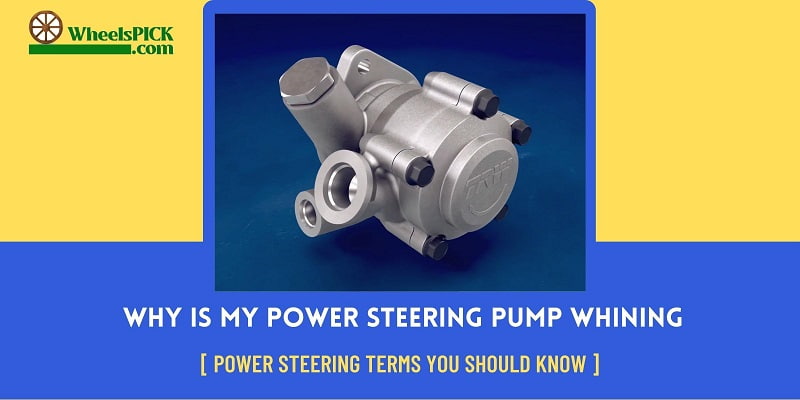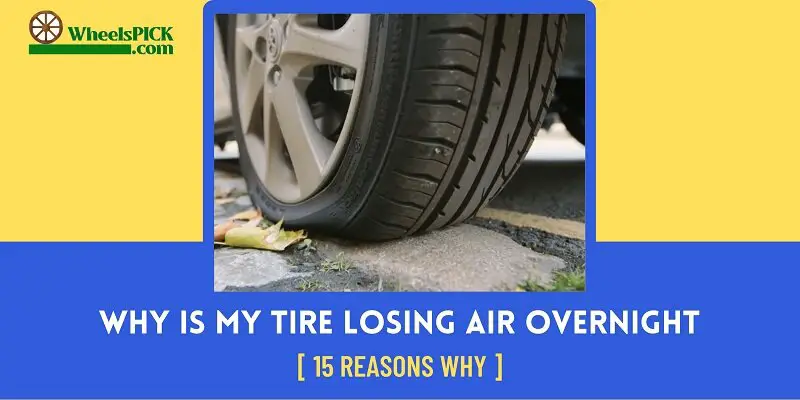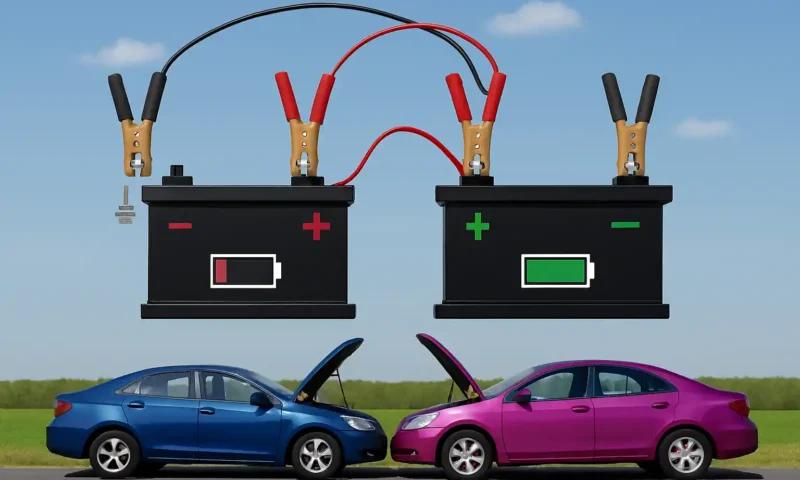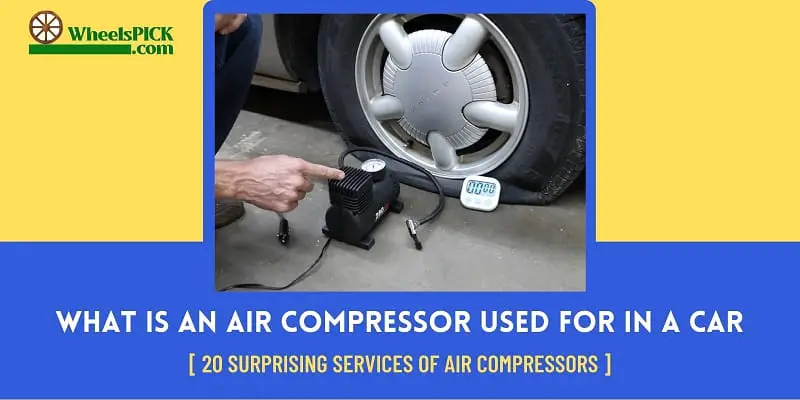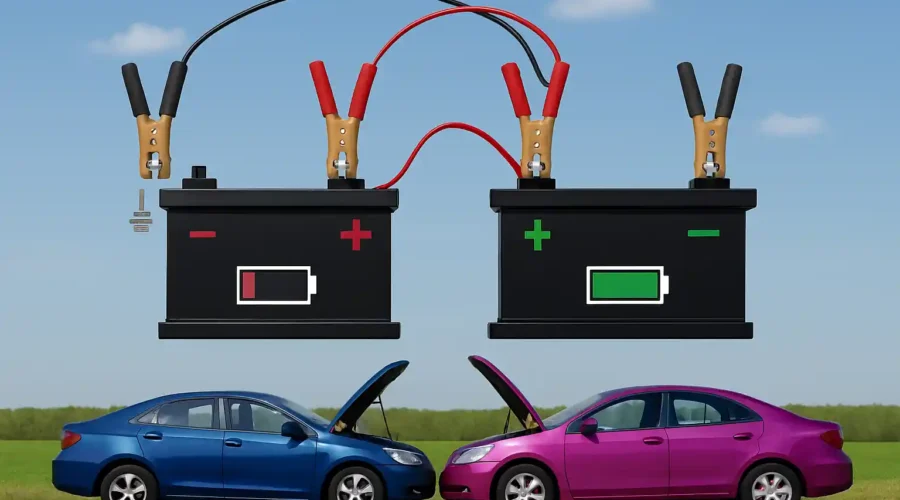So, you’ve been hearing a weird humming or whining sound from your steering pump lately, and you’re eager to find out what’s wrong. Well, take a seat because we’re here to explore the details of this phenomenon. To be honest, you’ve done a great job so far if you’ve understood that the whining sound is from the power steering pump, as identifying the issue can get tricky at times.
In any case, any clunky or squeaky sound doesn’t bode well for your car; thus, you must urgently put yourself and your sweet ride out of this misery.
Now, there can be plenty of reasons for this issue. So, before you break into a sweat, obsessing over the question, ‘why is my power steering pump whining?’ – Let us help. Keep reading to know the causes, symptoms, and remedies for your car’s power steering pump noise.
How to Tell If Your Power Steering Pump Is Bad
There could be multiple reasons, such as trapped air in the power pump, lack of fluid, or other faulty components within the system that could be forcing the power steering pump to create unusual sounds. However, it’s vital to scan and find the problem area first to implement the correct solution. So, if you’re wondering – why is my power steering pump whining, keep reading!
Power Steering Whine: Why Is My Power Steering Pump Whining?
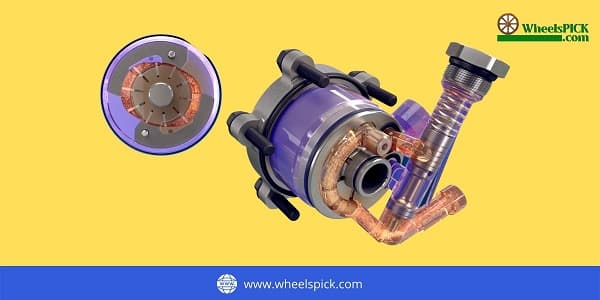
So, why is this malfunctioning occurring in the first place? Good question. Before we look into further details, let’s give it straight. We’ve listed the leading and most common reasons for whining sounds in the power steering pump. But, don’t worry. We will also elaborate on them in the following sections.
- Broke or worn-out power steering pumps
- Clogged hoses
- Low levels of steering fluid
- Leaks, cracks, or other damages in the hose
- Foamy and bubbly steering fluid
- Worn out steering fluid
Power Steering Terms You Should Know: Why Is It Important?
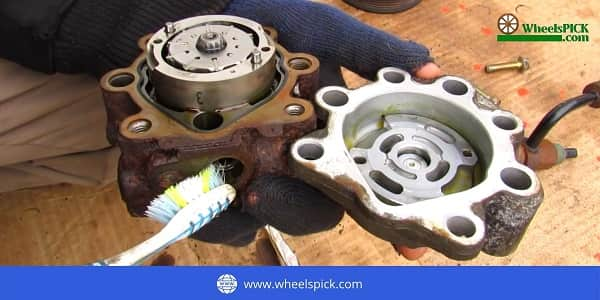
Power steering are automotive systems that utilize engine power or motors to minimize the front wheel’s exertion and effort. These compartments generally act as another helper to the car and driver, allowing smoother maneuvering of the vehicles even at the lowest speed range. Moreover, it permits more accessible parking and turns at slow speeds.
With that being said, here are a few power steering conditions that users must know. Trust us; these terms have cleared couple of confusions about people wondering, ‘why is my power steering pump whining?’
- Pressure Switch
Pressure switches identify pressure rates within the power steering mechanic, which then transmits the information along the ECU passage. The ECU adjusts the engine’s powers based on the received information.
- Power Steering Flush
A power steering flush is an absolute must-have when drivers need to flush out the car’s fluid. It can drain the fluid from the reservoir and refill as needed. Moreover, it also allows drivers to check the hoses and seals of the cars at regular intervals as they should.
- Filters
The filter in the power steering systems can filter steering fluids before pumping them throughout all the functional compartments.
- Pinions And Racks
The pinion and rack steering gears allow the wheels to maneuver right or left based on the driver’s command and steering wheel. The steering shaft is engaged to the pinion; thus, when this shaft moves, the pinion and rack follow.
- Serpentine Belt
Serpentine belts are around the pump pulley and other compartments of the engine. If there’s adequate tension in this belt, it will allow smooth spinning and movement to the hydraulic pressure units. But, if the stress is hampered, the car’s overall performance will deteriorate.
- Pressure Line Hose
Power steering pumps have two connectivity to the hose, one for the pressure line and the other as a return hose. At the same time, the pressure line handles the hydraulic pressure and the other acts as a feeder to the steering rack.
- Fluid Reservoir
The power steering fluid’s reservoir consists of the power steering fluids placed around the firewall. A hose connects the pump to the reservoir to draw fluid as required. The fluid can also return to the reservoir if needed through the returning lines.
- O-Ring
O-rings are located at the outlets and inlets of the system and effectively prevent all fluids leaks. However, sometimes O-rings can deteriorate due to general wear and tear; thus, an OEM o-ring can replace it.
- Power Steering Fluid
These are hydraulic, petroleum-based fluids that exert needed pressure on steering racks in motion. The stored fluid is pushed throughout the pinions and racks. However, this fluid can leak from a handful of places, such as the power steering pump, return hose, and pressure hose. Therefore, they need replenishment as needed.
Why Does Power Steering Stop Working Sometimes?
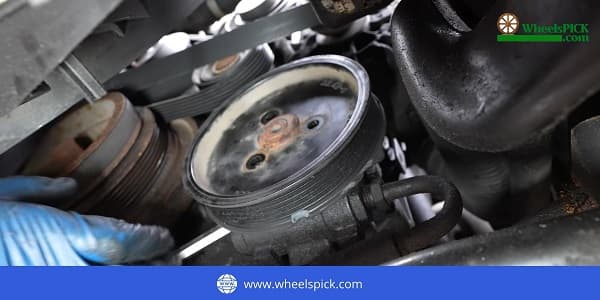
Has your power steering stopped working all of a sudden? If you’re eager to discover the possible reasons, keep reading.
- Maintenance: The maintenance of your power steering system has undeniable advantages. You will have a predictable and safer driver once you regularly check and maintain the system. Otherwise, all hell might break loose.
- Force: There are a few terrain conditions the power steering can’t handle, such as robust jolts, bumps, and unexpected potholes. Therefore, when the car withstands such pressure and force, compartments such as the steering system, belts, or pumps might get loose or even break, leading to weaker functionality.
What are the Symptoms of a Failing Power Steering Pump?
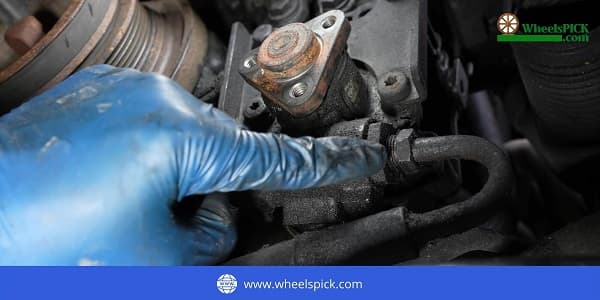
An unusual sound coming from your beloved vehicle? Here are a few symptoms that can lead to a faulty power steering pump and the God-awful noise!
- Groaning – If you hear loud groaning noises from below the hood, the car’s pump is seriously damaged and requires immediate attention.
- Squeaking – Now, there are many reasons why a car might squeak; however, the power steering pump is the first place you must check when this occurs.
- Hard Steering Wheel – When your steering pump malfunctions, one of the most evident symptoms is a hard or stiff steering wheel.
- Delayed Responses – Is your steering wheel picking up commands slower than usual? The root cause might lie within the steering pump!
- Whining – Lastly, a slow or loud whining sound is a dead giveaway that your car’s power steering pump is malfunctioning.
What Are The Causes Of The Power Steering Pump Noise?
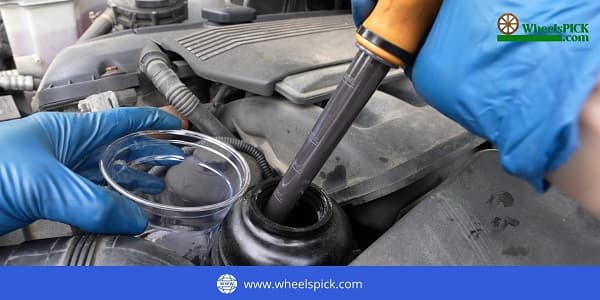
We understand you’re frustrated with the whining sounds, but before we jump into the solutions, it’s wiser to know what might be causing this havoc. So, let’s talk about the causes of the power steering pump’s noises first, shall we?
- Worn Out Fluid
Now, a few issues could lie within the power steering fluid. First, if you’re using old fluid for too long, it might’ve worn out. The fluid loses its essential properties and composition elements, rendering it useless. Furthermore, the fluid would’ve lost its viscosity and additives, making it malfunction. - Air Bubbles In The Fluid
Sometimes the power steering fluid gets air bubbles which cause it to foam up when the car starts running. This foamy and bubbly fluid makes the other compartments vibrate, creating unusual whining or squeaky noises. - A Cracked Or Loose Hose
Due to generic wear and tear, the hose in your car could be broken or loose. Either way, it leads to the fluid in the power steering pump getting filled with bubbles and eventually leaking. This also leads to drastic drops in power steering fluid levels frequently. Since the fluid leaks, it prevents all the mechanics from functioning correctly, thus creating whining sounds. - Clogged Hose
Another reason for such misfortune is when the rubber hose that engages the pump to the steering fluid’s reservoir gets clogged. The pump fails to draw and transmit needed amounts of fluid to the steering rack in that case. This makes the steering wheel hard and slower and creates noises too. - Faulty Pump
Perhaps the pump connecting to the power steering may not be functioning. This leads to loud whining and groaning noises from the system.
Trapped Air In The Power Steering Fluid Or Pump
If your car or power steering pump has begun to sound like a disgruntled cat, air bubbles may be trapped in the system’s fluid. The good news is that it’s easy to eradicate, and all you need to do is remove the current steering fluids and fill it up with a fresh fluid batch.
Why might power steering fluid boil?
The aforementioned air bubbles in the fluid can also proceed to get inside the systems further and deep within the reservoirs. This misfortune causes the fluid to boil and go bad.
How to Bleed Power Steering Pump
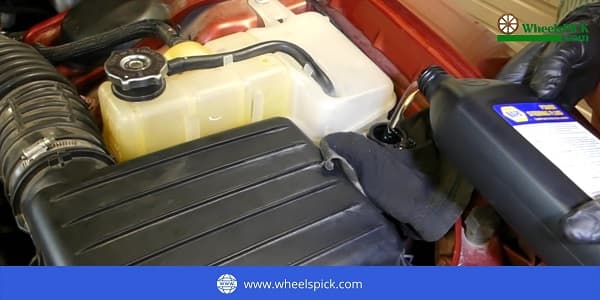
So, here are the steps to bleed the power steering and eradicate most faulty fluid issues.
- Inspect the fluid in the system.
- To bleed it clean, utilize a vacuum pumping kit.
- Lift your car using jack stands.
- Unlock the steering wheel by inserting the key into the ignition.
- Spin the steering wheel constantly for around half an hour to push out the unwanted air.
- Check and fill the fluid as needed.
- Start the car and turn the steering wheel again for about half an hour.
- Review the reservoir top for remaining bubbles.
- Keep turning the steering wheel if needed to push out remaining air bubbles.
Why Your Steering is Screeching/ Humming At You
A screeching or humming sound in your car results from a low-power steering fluid or a loose belt somewhere in the system. To be on the safer side, review and fix the issue immediately.
How to Stop a Power Steering Pump With a Whining Noise

Before you break into a sweat thinking, ‘why is my power steering pump whining’ and the costs it might need to fix it, check out the steps below. You can try these steps and release your steering pump from this unforeseen misery. Here’s how.
Step#01
Don’t turn the steering wheel at the extreme right or left while idling or making a low-speed turn. This could cause severe pressure within the system leading to more significant issues.
Step#02
Set your car in a neutral or parking position with the emergency brake on. Let your car idle and lift the hood. Next, eradicate the power steering pump’s reservoir cap and clean the dipstick with a cloth before screwing it back onto the reservoir.
Unhinge the lid to inspect if the levels read ‘hot.’ And if it further indicates lower fluid ranks, this may be the reason for the whining noise. You can minimize the issue effectively by filling the fluid as needed.
Step#03
Review the viscosity and color of the fluid in the reservoir. It should be thick and red. It must’ve gone bad if you notice anything unlike the given description, such as suds, black or brown colored fluid. Pump fluid’s necessary to lubricate the pumps, bearings, and seals. Thus, if it’s bad, there must be replacement immediately.
Step#04
Loosen the low-pressure rubber hose’s clamp that’s located underneath the pump’s reservoir utilizing a screwdriver. Catch the residues in a pan and loosen the high-pressure metal nut line using a wrench. Let the residues drain once again. Eradicate the reservoir cap to eradicate all the fluids and clean the interior using a rag cloth.
Step#05
Reengage the low-pressure rubber hose utilizing a screwdriver slot to tighten all the clamps. Also, screw the metallic nut line with a wrench and refill the reservoir with clean and new power steering fluid. Start the engine, and voila! Your car must be noise-free now.
What Causes Losing Power Steering When Making a Turn?
Generally, low turns result from old and worn-out hydraulic fluids that have lost their vital cooling and lubricating properties. Moreover, a filthy valve can also lead to such issues. A few more reasons for this consequence could be air pockets, low RPM, worn-out drive belts and power steering fluid levels.
Can You Drive With a Defective/Broken Power Steering Pump
It’s possible to drive with defective steering pumps; however, turning the steering wheel will be much more challenging, and forcing the system could further lead to severe lubrication, sealing, and other issues.
Maintain Your Power Steering Pump
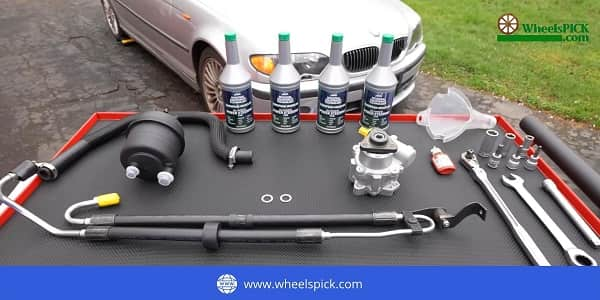
Having trouble maintaining the health of your power steering pump? Let us help. Follow these simple tricks to get a jumpstart.
- Check your steering fluid regularly,
- Fill and refill fluids yearly.
- Keep the interior and fluids clean.
- Continuously check for fluid leaks.
- Review the low and high-pressure hoses.
- Replacement of filters yearly.
How Hard Is The Power Steering Pump To Replace?
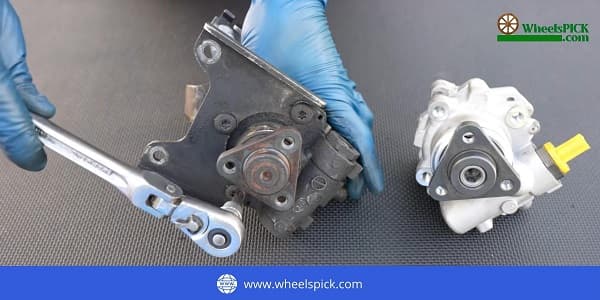
Here’s the good news. Replacing or changing the power steering pump requires a few handy tools that you could have lying around at your home or workstation. However, if the technical flare-nut wrench is needed, you’ll have to grab them from a professional store.
How Much Does The Power Steering Pump Cost To Replace?
Repairing the power steering pump will cost around $200 to $350. However, replacing the entire system will cost a bit more at about $400 to $800.
How Long Should My Power Steering Pump Last?
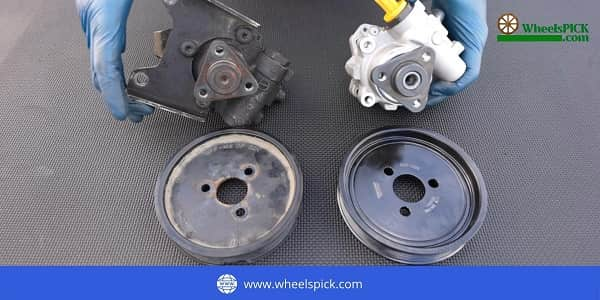
From a technical perspective, power steering pumps should last around 100,000 miles. Now, how long it would take you to fill that limit depends on the frequency of your drives and maintenance.
Final Thoughts
So, does it still seem like going through hell and coming back when dealing with power steering pumps? We hope not!
If you’re someone who’s been wondering and demanding answers to the question – ‘why is my power steering pump whining?’ then you’ve been saved. Thanks to our intensive hours of research, we know pretty much every detail that can make or break the health and well-being of your power steering pump. Think we’re exaggerating?
Well then, why don’t you give our solutions a try and see for yourself. Remember to never jump straight into the fixes. The most vital part of dealing with power steering is first locating and understanding the issue, symptoms, and root cause. Once you do, the hard part is over – trust us!

